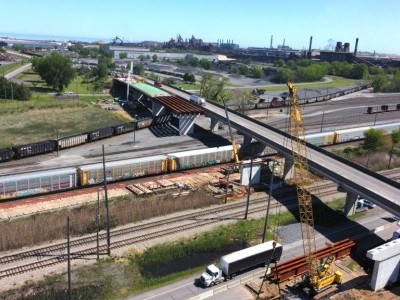Port of Baltimore receives top security grade for 12th straight year
Nov 19, 2020For the 12th consecutive year, the Helen Delich Bentley Port of Baltimore’s state-owned, public marine terminals received a top security grade during an annual assessment by the U.S. Coast Guard. The assessment reviewed security procedures and protocols at the six public marine terminals: Dundalk, Seagirt, North Locust Point, South Locust Point (including the cruise passenger terminal), Fairfield and Masonville.
“Throughout the COVID-19 emergency, the Port of Baltimore has played a crucial role in keeping Maryland’s supply chain moving, and will be key in the state’s economic recovery as well,” said Maryland Department of Transportation (MDOT) Secretary Greg Slater. “Protecting our dedicated workforce is critical to the Port’s mission, and this top security rating reflects that commitment.”
Each year U.S. Coast Guard Sector Maryland conducts an inspection to ensure compliance of federal security regulations. The visual inspection includes a review of access control procedures and makes certain physical security fixtures, such as high-mast lighting and fencing, are up to federal security standards.
In recent years, MDOT Maryland Port Administration (MDOT MPA), which oversees the Port’s public marine terminals, has implemented security enhancements including closed circuit television, cyber security initiatives and stronger access control technologies.
“I want to thank our own Maryland Department of Transportation Maryland Port Administration (MDOT MPA) Director of Security David Espie and his team for their outstanding work that resulted in this impressive honor,” said MDOT MPA Executive Director William P. Doyle. “We also appreciate the great teamwork that we have with the U.S. Coast Guard, Customs and Border Protection, Maryland Transportation Authority Police, and other key security partners.”
The Port of Baltimore generates about 15,300 direct jobs, with nearly 140,000 jobs overall linked to Port activities. Last year the Port handled a record 43.6 million tons of cargo, including more than 11 million tons of general cargo at the state-owned, public terminals. The Port ranks first among the nation’s ports for volume of autos and light trucks, roll on/roll off heavy farm and construction machinery, and imported gypsum. It ranks 11th among major U.S. ports for cargo handled and ninth for total cargo value.
The health and safety of the Port of Baltimore workforce is paramount, and the public marine terminals have maintained stringent CDC-recommended health and safety measures to ensure safety of its labor force, tenants and partners. MDOT MPA encourages the use of face coverings and social distancing measures for individuals working at the marine terminals, and encourages teleworking for those able to do so. Temperature screenings and other preventative procedures are also continuing.
The Port of Baltimore’s infrastructure, including its existing 50-foot berth and supersized cranes, are results of the public-private partnership (P3) between MDOT MPA and Ports America Chesapeake. The 50-year agreement, signed in 2009 in the wake of a national recession, generated thousands of jobs and continues to result in increased tax revenue for the state and funds for the Transportation Trust Fund.
As part of the P3, work is progressing on a second 50-foot berth that will allow two massive ships to visit the Port at the same time. That berth, and four new supersized cranes, are expected to be operational by summer 2021. The Port’s growing container business also accentuates the need for the Howard Street Tunnel expansion project in Baltimore, which will accommodate double-stacked rail cars to move cargo from the Port. That project will benefit from public-private investment from the state, CSX and others.
Similar Stories

Jeffersonville port delivers record road salt shipments to Greater Louisville area during recent winter storms
View ArticleNC Ports Notice: Holiday Schedule Notice Martin Luther King Jr. Day
The Port of Wilmington Container Gate (South Gate) and the Charlotte Inland Port (CIP) will operate on a reduced schedule on Monday, January 20: 8 AM-12 PM and 1 PM-5…
View Article
Port of Long Beach’s Cordero hails ‘Green Port’ achievements
View Article
Port of San Diego accepts $5 million grant from the San Diego County Air Pollution Control District for clean air project
View Article
Adriatic Gate Container Terminal welcomes Bora Med Service
View Article
Savannah gets India cargo to market up to eight days faster
View ArticleGet the most up-to-date trending news!
SubscribeIndustry updates and weekly newsletter direct to your inbox!





